Bucyrus-Erie 50-B (?)
Revised 14-Feb-1998
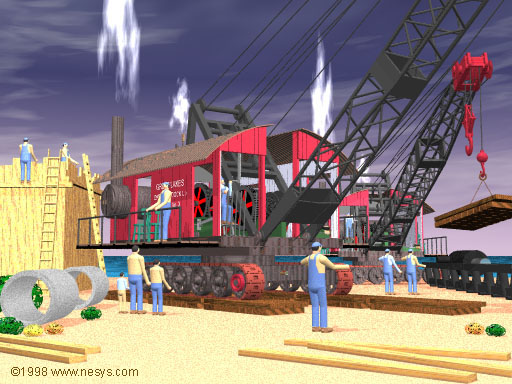
We have entered an image in the Internet Ray Tracing Competition
This is a reconstruction of a childhood memory.
This machine built a local water plant in the mid 1950's.This reconstruction is based on several sources - 40 year old memories of a young kid,
a similar 50-B shovel recently restored to operation by a collector, and photographs.
There is considerable guesswork involved in this reconstruction,
as there was wide variation between units.
In fact, the identification of the machine is not definite.
Based on certain key design elements, it is believed to have been
a Bucyrus-Erie machine, in the 50-B to 65-B size range.
These large machines were built from modular components,
and essentially custom designed for the customer's needs.
It is hoped that more information about this machine can be obtained,
at which time the model will be corrected.
Due to the uncertainties, the model is fully parameterized to simplify modifications.
Some key design elements were:
|
Great Lakes Dredge and Dock Company is still very much in business,
with essentially the same color scheme.
The 50-B is a large machine by the standards of then or now, nearly impossible to move by road.
For this reason, few were ever seen outside of mines and quarries.
GLD+D could use it because they moved it by barge.
The recently restored 50-B shovel was disassembled and moved in 5 large truckloads.
Steam cranes survived in marine construction on the Great Lakes, rivers, and ocean well into the 1980's,
because they could give more precise load control, smoother load acceleration, and higher line speeds
than early gas or diesel cranes, which could only be inched by slipping clutches.
Additionally, they could supply steam to a pile driver.
They were finally beaten out by torque converter drives and and hydraulics.
Steam pile drivers are still in common use, powered by compressed air.
The view from the cab...

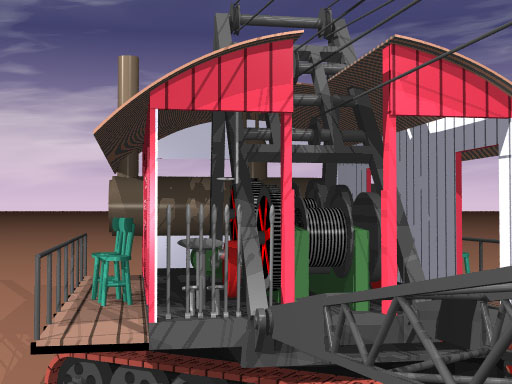
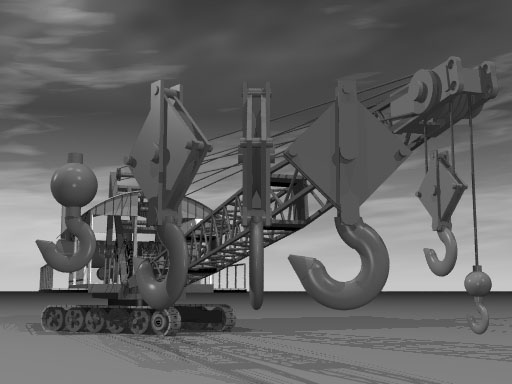
This is the swing engine.
The separate swing engine was one of steam's advantages over early diesel cranes,as it allowed fast and precise positioning of the load.
Dressing up steam engines was as common then as a classy Kenworth is today.

Here is our next project


Earlier stages of development
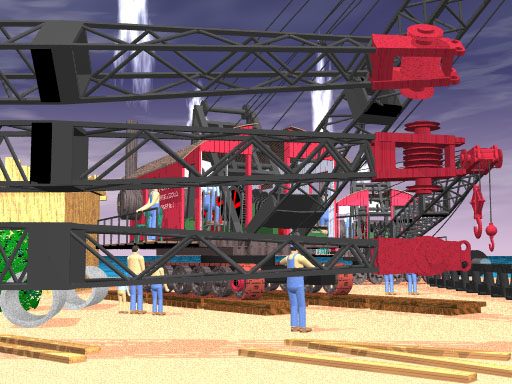
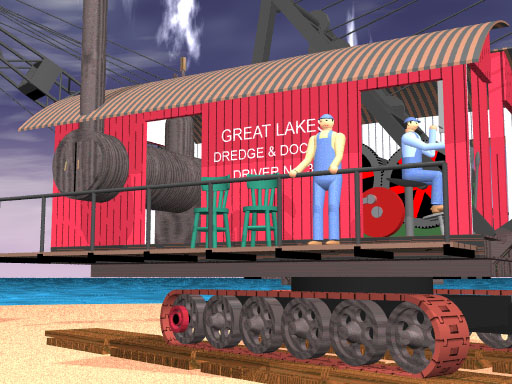
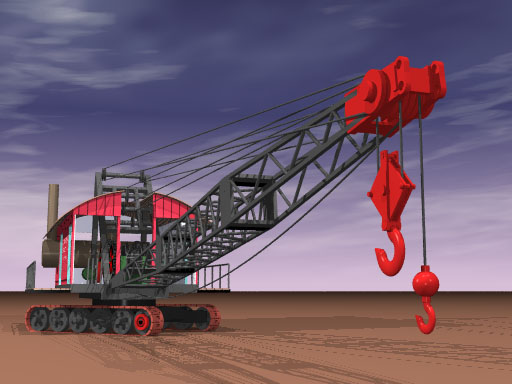

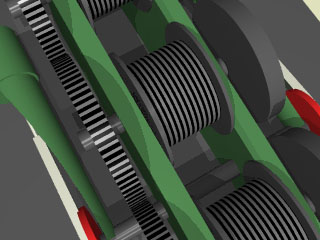
This is the original Bucyrus-Erie color scheme.
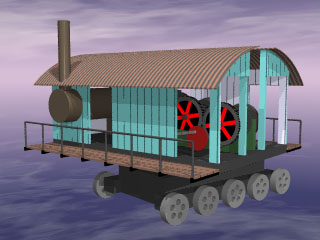
Artwork (c) 1997, 1998 North East Systems
The trademark of Great Lakes Dredge and Dock Company is acknowledged
The trademark of Bucyrus-Erie Company is acknowledged